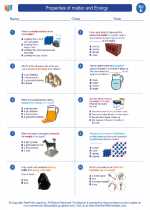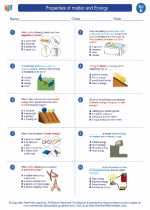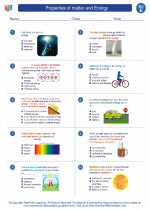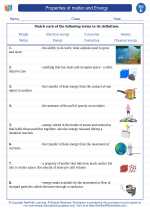Properties of matter and Energy -> electric motors
How Electric Motors Work
Electric motors consist of a few key components:- Stator: This is the stationary part of the motor and contains the coils of wire that are connected to an external power source.
- Rotor: This is the rotating part of the motor and is connected to the load that the motor will be driving.
- Commutator (in some motors): A device that ensures the direction of current in the rotor coil changes at the right time to keep the motor turning in the same direction.
- Brushes (in some motors): These conduct current to the commutator.
Types of Electric Motors
There are several types of electric motors, including:- DC Motors: These motors run on direct current and are commonly used in applications where adjustable speed is required.
- AC Motors: These motors run on alternating current and are used in a wide range of applications, from small household appliances to large industrial machinery.
- Induction Motors: A type of AC motor where the rotor is not connected to an external power source.
- Brushless Motors: These motors use electronic commutation instead of brushes and a commutator, leading to improved efficiency and reliability.
Applications of Electric Motors
Electric motors are used in a wide variety of applications, including:- Industrial machinery such as conveyor belts and pumps
- Household appliances like fans, refrigerators, and washing machines
- Electric vehicles, including cars, trains, and ships
- Renewable energy systems such as wind turbines
Study Guide
To understand electric motors, it's important to grasp the following concepts:- The relationship between electricity and magnetism
- The different types of electric motors and their applications
- How the components of an electric motor work together to produce mechanical energy
- The importance of electric motors in various industries and everyday life
◂Science Worksheets and Study Guides Fifth Grade. Properties of matter and Energy
Study Guide Properties of matter and Energy
Properties of matter and Energy  Worksheet/Answer key
Worksheet/Answer key Properties of matter and Energy
Properties of matter and Energy  Worksheet/Answer key
Worksheet/Answer key Properties of matter and Energy
Properties of matter and Energy  Worksheet/Answer key
Worksheet/Answer key Properties of matter and Energy
Properties of matter and Energy  Vocabulary/Answer key
Vocabulary/Answer key Properties of matter and Energy
Properties of matter and Energy  Vocabulary/Answer key
Vocabulary/Answer key Properties of matter and Energy
Properties of matter and Energy 

 Worksheet/Answer key
Worksheet/Answer key
 Worksheet/Answer key
Worksheet/Answer key
 Worksheet/Answer key
Worksheet/Answer key
 Vocabulary/Answer key
Vocabulary/Answer key
 Vocabulary/Answer key
Vocabulary/Answer key

The resources above cover the following skills:
PHYSICAL SCIENCE (NGSS)
Matter and Its Interactions
Students who demonstrate understanding can:
Develop a model to describe that matter is made of particles too small to be seen.